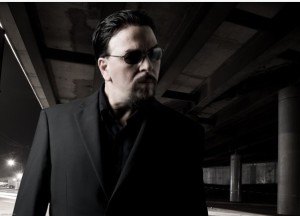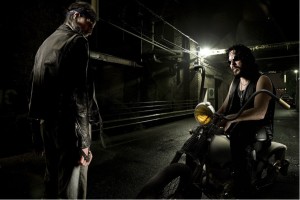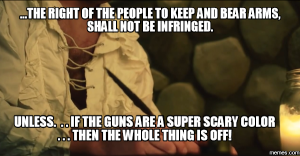In our last post, The Law of Open Carry in Pennsylvania, we discussed how Law Enforcement Officers (LEOs) in Pennsylvania cannot legally stop you for simply openly carrying a firearm.
But does it matter what you’re doing while openly carrying your firearm? Recently, a federal judge in the Western District of Michigan held that it does. In Deffert v. Moe, Judge Janet T. Neff was tasked with determining whether officers of the Grand Rapids Police Department violated the Fourth Amendment in detaining open carry proponent Johann Deffert.
Watch the video of the entire encounter below, which begins with the 911 call which garnered Law Enforcement Officer (LEO) attention.
https://www.youtube.com/watch?v=wLmrTENZwDA
Although not entirely obvious from the video, Mr. Deffert was apparently carrying his firearm in a thigh rig, wearing a green jacket with camouflage pants, and singing a children’s song ―“Hakuna Matata” from the movie The Lion King ― as he strolled down the street. None of these activities are illegal under Michigan law.
Judge Neff, however, went beyond the fact that Deffert’s conduct was entirely lawful. Rather, the court’s analysis focused on two things: whether there was a risk of serious injury posed that required swift action (which satisfies the “exigent circumstances” exception to the warrant requirement); and whether the officers had reasonable suspicion of a crime (necessary for a constitutional investigatory detention).
The court evaluated the totality of the circumstances, and determined that no constitutional violation had occurred. The court reasoned that Deffert’s behavior indicated a risk of serious injury, and that it gave the officers reasonable suspicion that a crime was being committed. In evaluating the totality of the circumstances, the court noted:
[Deffert’s] location outside a church in service, the conspicuous placement of his firearm in a low leg tactical holster, the tactical light with laser mounted on his firearm, his military clothing, his loud singing of a song from a children’s movie, or the resulting concerns of at least one person leaving church . . . .
This reasoning seems to form an incredibly slippery slope.
Deffert’s position outside the church was not unlawful. If the location is not prohibited by law, does the court expect gun owners to use some kind of “extra judgment” and stay away from places not prohibited?
If that’s the case, which locations should gun owners stay away from, even though they’re not legally prohibited (in Pennsylvania)?
If there is nothing illegal about openly carrying, should placement matter? Which of the following should gun owners avoid, even though it’s perfectly legal?
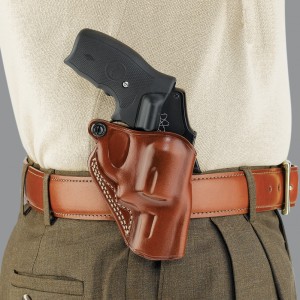
On your hip? Photo retrieved from https://www.galcogunleather.com/paddle-holsters_8_5.html on 6/17/2015.
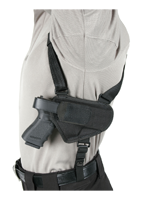
On your shoulder?
Holster for sale at Pittsburgh Tactical. Photo retrieved from http://www.pittsburghtactical.com/product.blackhawk-horizontal-shoulder-holster-4-5-5-auto-medium on 6/17/2015.
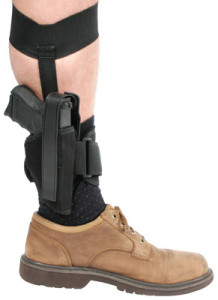
On your ankle? (I know, rare for open carry). Holster for sale at Pittsburgh Tactical. Photo retrieved from http://www.pittsburghtactical.com/product.blackhawk-40ah12bkl-ankle-holster-12-black-knit-fabric on 6/17/2015.
If it’s not illegal to sing songs, which songs are OK to sing for open carry, and which songs indicate a risk of serious injury?
https://www.youtube.com/watch?v=N5Ts4M3irWM
If “military clothing” contributes to both reasonable suspicion and a perceived risk of serious injury, what kind of clothes will the court find less threatening?

Jim Harbaugh. Photo retrieved from http://extras.mnginteractive.com/live/media/site568/2014/0114/20140114_052321_ssjm011349ers203_300.jpg.
If the “tactical light with laser mounted on his firearm” (sic) partially gave rise to reasonable suspicion and a perceived risk of serious injury, which other accessories, although entirely legal, should gun owners refrain from owning or carrying?
When you break it down, it seems obvious that these distinctions are entirely arbitrary. Arbitrarily chipping away at constitutional rights is no doubt a dangerous game.
Perhaps the most reasonable point, which the court only briefly touched on, is the fact that the LEOs believed Deffert to be “talking to nobody” at the outset. Talking to nobody can potentially be a sign of mental illness. Diagnosed schizophrenics often respond to internal stimuli through “carrying on a conversation alone.” See Aquino, M.D. Diagnosing and Treating Schizophrenia, p. 43.
Does that give an LEO reasonable suspicion that Deffert was mentally ill, or had been involuntarily committed?
It is safe to say, however, that talking to nobody is not always a sign of mental illness, and can be fairly common. Maybe somebody in the next room has asked “What did you say?” or “Who are you talking to?” and you’ve had to respond “Nevermind, I was just talking to myself.”
This makes it a more difficult analysis. Somewhat surprisingly, this was a fact that the court did not elaborate upon very much. Perhaps this is because when Officer Moe approached Mr. Deffert, he quickly realized that he was not speaking to himself. Rather, Deffert was articulate throughout the encounter and seemed perfectly stable.
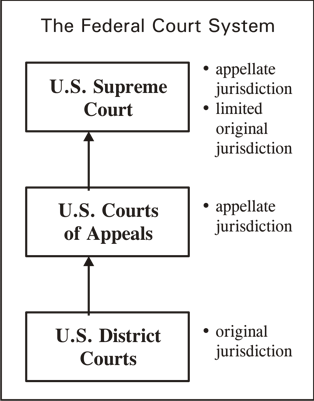 Fortunately for PennLAGOs, this decision has no binding effect on Pennsylvania law. It comes from a trial court in the Eastern District of Michigan. Even if we get a holding from the Sixth Circuit on appeal, that will not provide binding authority in Pennsylvania. However, different circuits have taken positions on open carry and the Fourth Amendment. Divisive circuit splits generally prove to be good candidates for review by the Supreme Court of the United States.
Fortunately for PennLAGOs, this decision has no binding effect on Pennsylvania law. It comes from a trial court in the Eastern District of Michigan. Even if we get a holding from the Sixth Circuit on appeal, that will not provide binding authority in Pennsylvania. However, different circuits have taken positions on open carry and the Fourth Amendment. Divisive circuit splits generally prove to be good candidates for review by the Supreme Court of the United States.
For now, we shall wait.




